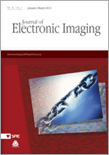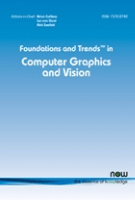
MACHINE VISION AND APPLICATIONS
Scope & Guideline
Shaping the Future of Hardware and Software Systems.
Introduction
Aims and Scopes
- Computer Vision Techniques:
The journal covers a broad range of computer vision techniques, including object detection, image segmentation, and feature extraction, which are foundational to developing robust machine vision systems. - Deep Learning and Neural Networks:
A significant focus is on deep learning methods, particularly how convolutional neural networks (CNNs) and transformers can be applied to enhance image processing and analysis tasks. - Applications in Robotics and Automation:
Research related to the application of machine vision in robotics, such as autonomous navigation, object tracking, and human-robot interaction, is a core area of interest. - Multimodal and 3D Vision:
The journal explores multimodal approaches that integrate data from various sources, including RGB-D images and LiDAR data, to improve object recognition and scene understanding. - Real-time Processing and Efficiency:
An emphasis on developing efficient algorithms that allow for real-time processing capabilities, essential for applications in surveillance, autonomous vehicles, and robotics. - Medical Imaging and Biomedical Applications:
The journal also addresses the application of machine vision techniques in medical imaging, including segmentation and classification tasks relevant to healthcare. - Environmental and Industrial Applications:
Research on machine vision applications in environmental monitoring, manufacturing, and quality control, showcasing its relevance in real-world industrial settings.
Trending and Emerging
- Transformers in Vision Tasks:
There is a growing trend towards utilizing transformer architectures in machine vision applications, indicating a shift from traditional CNNs to architectures that can better capture long-range dependencies in image data. - Self-Supervised and Few-Shot Learning:
Research on self-supervised and few-shot learning techniques is on the rise, driven by the need for models that can learn effectively with limited labeled data, which is crucial in many real-world applications. - Robustness and Adversarial Defense:
Increasing attention is being paid to the robustness of machine vision systems against adversarial attacks, highlighting the importance of security in deploying machine vision technologies. - Real-Time Video Analysis and Tracking:
There is a notable increase in publications focusing on real-time video analysis, object tracking in dynamic environments, and applications in surveillance and autonomous systems. - Generative Models and Synthetic Data:
The use of generative models, such as GANs, for creating synthetic datasets and enhancing model training is emerging as a significant area of interest, addressing challenges in data scarcity. - Explainable AI in Vision Systems:
Emerging research on explainable artificial intelligence (XAI) in vision systems is gaining traction, as there is a growing demand for transparency and interpretability in machine learning models.
Declining or Waning
- Traditional Image Processing Techniques:
There is a noticeable decline in the publication of papers focusing solely on traditional image processing techniques, such as histogram equalization and basic filtering, as the field increasingly shifts toward deep learning-based approaches. - Low-level Vision Tasks:
Research specifically targeting low-level vision tasks, such as basic edge detection and noise reduction without advanced methodologies, has seen a reduction, likely due to the rise of more complex and effective deep learning methods. - Static Image Analysis:
The focus on static image analysis is decreasing as the journal increasingly emphasizes dynamic and real-time applications, particularly in video processing and live data analysis. - Manual Feature Engineering:
As automated feature extraction through deep learning becomes standard, research relying on manual feature engineering and handcrafted descriptors is less frequently published. - Single-Modal Systems:
The exploration of single-modal vision systems is declining, as there is a growing interest in multimodal systems that incorporate various types of data for enhanced performance.
Similar Journals

JOURNAL OF MATHEMATICAL IMAGING AND VISION
Empowering the Future of Imaging with Mathematical RigorJOURNAL OF MATHEMATICAL IMAGING AND VISION, published by Springer, stands as a significant platform for advancing the fields of applied mathematics, computer vision, and pattern recognition, among others. With an ISSN of 0924-9907 and an E-ISSN of 1573-7683, this esteemed journal is based in the Netherlands and has been contributing to the scholarly discourse since its inception in 1992, with a converged focus through 2024. It has achieved reputable standings within several quartiles, including Q2 rankings across applied mathematics, geometry and topology, and condensed matter physics, reflecting its impact and relevance. Notably, the journal ranks within the top 5% in Geometry and Topology and maintains robust standings in Statistics and Probability. The JOURNAL OF MATHEMATICAL IMAGING AND VISION is dedicated to publishing high-quality research that bridges theoretical perspectives with practical applications, making it an essential resource for researchers, professionals, and students who are exploring the cutting-edge of mathematical imaging and its interdisciplinary applications.

INTERNATIONAL JOURNAL OF COMPUTER VISION
Unlocking the Potential of Computer Vision Research.INTERNATIONAL JOURNAL OF COMPUTER VISION, published by Springer, is a premier peer-reviewed journal that stands at the forefront of the fields of Computer Vision and Artificial Intelligence. With a remarkable impact factor and rankings placing it in the Q1 category across key areas such as Computer Vision and Pattern Recognition, as well as Software, this journal serves as an essential resource for researchers, professionals, and students alike. Since its inception in 1987, it has aimed to advance the understanding and methodologies within the rapidly evolving landscape of computer vision technologies. Its location in the Netherlands underlines its international significance, and with Scopus rankings placing it in the top percentiles of its categories, the journal is recognized for its contribution to groundbreaking research and innovative applications. Although it is not an open-access journal, it still provides extensive access options through institutional and personal subscriptions, offering its readers in-depth insights and findings pivotal to their work in artificial intelligence and computational technologies.

JOURNAL OF ELECTRONIC IMAGING
Advancing the Future of Electronic Imaging.JOURNAL OF ELECTRONIC IMAGING, published by SPIE - Society of Photo-Optical Instrumentation Engineers, stands at the intersection of cutting-edge research in various fields including Atomic and Molecular Physics, Optics, and Computer Science Applications. With an ISSN of 1017-9909 and an E-ISSN of 1560-229X, this esteemed journal has been a significant contributor to the scientific community since its inception in 1993, continuing its mission to provide a platform for innovative research through 2024. Operating from its headquarters in Bellingham, WA, United States, the journal is currently categorized in the third quartile for major domains such as Electrical and Electronic Engineering, indicating a robust engagement with contemporary topics and advancements. Although it is not an Open Access journal, it remains accessible to a wide audience of researchers, professionals, and students through institutional subscriptions. With its impactful contributions and a comprehensive view of electronic imaging, this journal not only serves as a vital resource but also drives discussions that shape the future of this rapidly evolving field.

Journal of Imaging
Pioneering Knowledge in Imaging and Electrical EngineeringThe Journal of Imaging, published by MDPI, is an esteemed open-access journal dedicated to advancing the fields of Computer Graphics, Computer Vision, and Electrical Engineering. Since its inception in 2015, this journal has established a significant presence in the academic community, reflected by its impressive rankings in Scopus, including a Q2 quartile in multiple categories such as Computer Vision and Pattern Recognition and Radiology. With a commitment to disseminating high-quality research, the journal offers a platform for innovative studies and practical applications, making it an essential resource for researchers, professionals, and students alike. Operating from its base in Basel, Switzerland, the journal continues to promote scholarly work that pushes the boundaries of imaging technologies, while contributing to the global discourse in its respective fields. The open-access model ensures that valuable research is readily available, fostering collaboration and knowledge-sharing across disciplines.

Journal of Real-Time Image Processing
Innovating Solutions for Instantaneous Image AnalysisJournal of Real-Time Image Processing, published by SPRINGER HEIDELBERG, is a renowned peer-reviewed journal dedicated to the field of real-time image processing. With an ISSN of 1861-8200 and an E-ISSN of 1861-8219, this journal operates under a rigorous academic framework, ensuring high-quality publications that cater to both theoretical and practical advancements in the discipline. Since its inception in 2006, it has continually evolved, maintaining a Q2 ranking in Information Systems according to the 2023 Category Quartiles. This journal ranks #103 out of 394 in Scopus for Computer Science - Information Systems, positioning it within the top 27% percentile, which underscores its significance in the research community. Its focus on the intersection of image processing and real-time applications makes it a vital resource for researchers, professionals, and students eager to explore and contribute to cutting-edge developments in the field. Though it does not currently offer open access, the journal's comprehensive scope and commitment to disseminating impactful research make it an essential platform for advancing knowledge in real-time image processing.

IMAGING SCIENCE JOURNAL
Connecting Researchers and Professionals in Imaging ScienceImaging Science Journal, published by Taylor & Francis Ltd, serves as a vital resource for researchers and professionals in the fields of computer vision, pattern recognition, and media technology. With an ISSN of 1368-2199 and an E-ISSN of 1743-131X, this journal has been fostering scholarly dialogue since its inception in 1997, with a converged content offering extending through 2024. Its categorization in Quartile 4 in Computer Vision and Pattern Recognition and Quartile 3 in Media Technology highlights its relevance and contributions to emerging trends in these domains. Although it ranks 36th in the Engineering - Media Technology category and 96th in Computer Science - Computer Vision and Pattern Recognition, its innovative research and insights continue to attract the attention of scholars dedicated to advancing knowledge at the intersection of imaging technologies. Offering versatile access options, this journal is essential for students, researchers, and professionals aiming to stay informed and engaged in the rapidly evolving landscape of imaging science.

Foundations and Trends in Computer Graphics and Vision
Pioneering Insights in Computer Graphics and VisionFoundations and Trends in Computer Graphics and Vision, published by NOW PUBLISHERS INC, is a premier journal dedicated to advancing the fields of computer graphics and vision. With an impressive impact factor and ranked Q1 in the Computer Vision and Pattern Recognition category, this journal has established itself as a vital resource for cutting-edge research and trends. Spanning from 2005 to 2024, it covers a wide array of topics within its scope, featuring comprehensive reviews and insights that are essential for professionals, researchers, and students alike. The journal’s high Scopus rank, placing it in the top 4 of 106 in its discipline, underscores its relevance and authority in the field. While currently not offering open access, the importance of its curated content makes it a valuable addition to any academic library and a must-read for those looking to stay at the forefront of computer graphics and vision advancements.

Computational Visual Media
Championing open access to visual media advancements.Computational Visual Media, published by TSINGHUA UNIVERSITY PRESS, is a premier open access journal dedicated to advancing the fields of Artificial Intelligence, Computer Graphics and Computer-Aided Design, and Computer Vision and Pattern Recognition. Since its inception in 2015, it has established a robust position within the academic community, consistently achieving Q1 rankings across its categories as of 2023. With exceptional Scopus rankings, including a remarkable percentile standing in the top 10% globally, the journal serves as a vital resource for researchers, professionals, and students eager to explore cutting-edge methodologies and technologies in computational visual media. The journal’s open access format enhances accessibility, fostering global collaboration and dissemination of knowledge, making it an indispensable platform for those at the forefront of innovation in these dynamic fields. The journal is headquartered in Beijing, China, and aims to publish high-quality research that not only contributes to theoretical advancements but also addresses practical challenges within computational visual technologies.

International Journal of Applied Pattern Recognition
Advancing knowledge through innovative methodologies.International Journal of Applied Pattern Recognition, published by INDERSCIENCE ENTERPRISES LTD, is a leading peer-reviewed journal that delves into the intricate world of pattern recognition and its applications across various domains, including computer vision, machine learning, and data mining. With its ISSN 2049-887X and E-ISSN 2049-8888, the journal aims to foster academic dialogue and present cutting-edge research that bridges theory and practice. As a vital resource for researchers, professionals, and students in the field, the journal emphasizes innovative methodologies, practical implementations, and interdisciplinary collaborations. Although it does not follow an open access model, contributions to the journal are rigorously vetted to ensure the highest quality of published work. By focusing on real-world applications and advancements in pattern recognition, the International Journal of Applied Pattern Recognition stands out as a key publication that not only informs but also inspires significant progress in the field.

MULTIMEDIA TOOLS AND APPLICATIONS
Transforming ideas into applications in multimedia technology.MULTIMEDIA TOOLS AND APPLICATIONS, published by Springer, is a highly regarded journal in the fields of Computer Networks and Communications, Hardware and Architecture, Media Technology, and Software. Since its inception in 1995, this journal has established itself as a vital platform for disseminating innovative research and developments, maintaining a prominent position evidenced by its Q2 and Q1 rankings across various categories as of 2023. With an ISSN of 1380-7501 and an E-ISSN of 1573-7721, it continues to attract high-quality contributions from scholars and practitioners worldwide. Although it does not currently offer Open Access options, its impact is reflected in impressive Scopus rankings, placing it in the top quartiles in multiple categories, including a remarkable 10th rank in Media Technology. As the field evolves rapidly, the journal’s objectives encompass advancing multimedia technologies and exploring their multifaceted applications, making it an essential resource for researchers, professionals, and students seeking to stay at the forefront of this dynamic discipline. For more information, visit the journal's page to explore recent publications and submission guidelines.